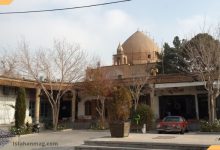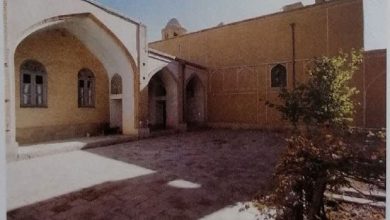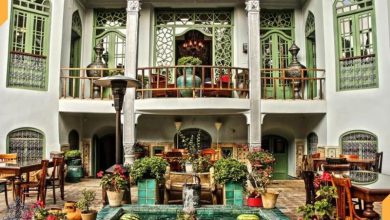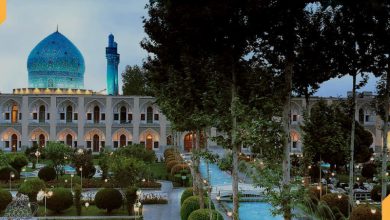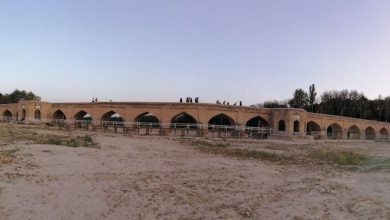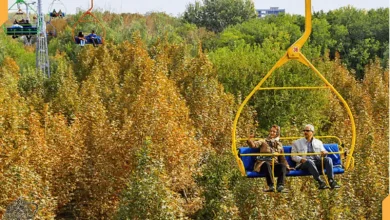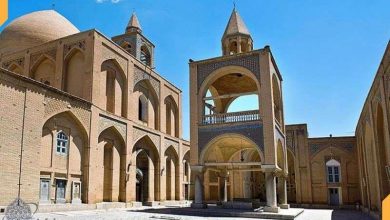Church of St. George

Church of St. George is located in the neighborhood of Maidan Kouchak and is called Khojents Church in honor of Khajeh Nazar, who was in charge of its financial support and executive management in the second decade of the seventeenth century.
The main entrance to the Surp Georg church complex is on the west side (1), but due to the widening of the main street, most of the original courtyard (2) and the buildings located there have been destroyed.

The current church building is located in the southeast corner of the site (5) and on both sides there are many rooms and inspirational columns (4) in which are kept some sacred stones of the Surp Echmiadzin Cathedral of Armenia.
These stones were brought to Isfahan by the order of Shah Abbas, which is considered by Armenian pilgrims today. Along with the columns and on the west side of the courtyard, there are two rooms that are used for accommodation, and the rest of the rooms are open to the western side of the courtyard (3).
These rooms are located on the site of what was once a small church and are now used for religious services in the summer. Construction work and deformation of this place have caused the destruction of many ceramic decorations of its exterior.
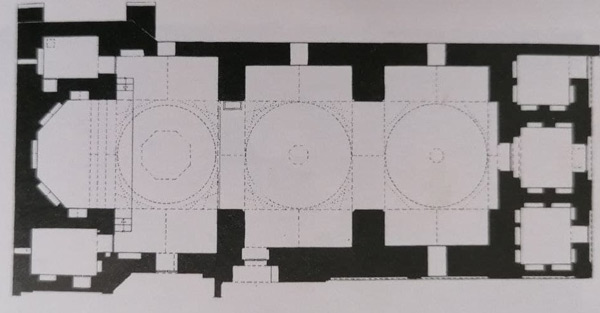
The entrance of the church with three openings in the Arabic wall has taken place; One leads to the first hall with a small skylight belonging to the eighteenth century, the other to the main hall with a quadrangular plan and half-columns on which two octagonal domes are located and a pentagonal recess with two rooms on both sides It leads, and the third to the other rooms that lead to the outside and are located on either side of the main entrance.
The general plan of Surp Georg Church
- input
- yard
- rooms
- porches
- Surp Georg Church
Despite the awkward renovations and reconstructions that have changed the original appearance of the interior and exterior of this complex, the harmony of the architectural structure of this building has always made it one of the most beautiful churches in Julfa. The interior of the church is also full of plaster.
Church of St. George. The northern entrance, which was built in 1619 and depicts the birth of Christ, is one of the best decorative examples of colored tiles in the churches of New Julfa.
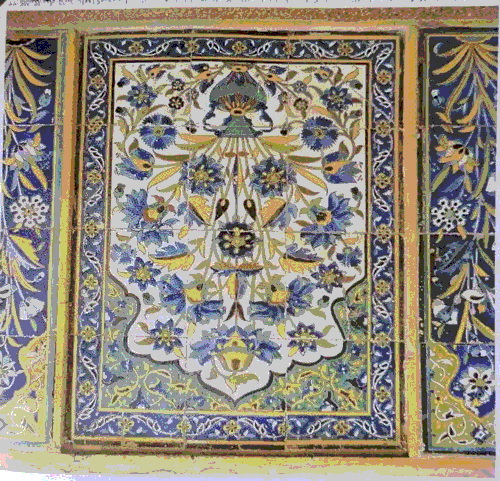
32: Another decorative entrance made of colored tiles and depicting the Gospel of Gabriel to Mary.
All of this reflects the traditional composition of Iranian miniatures: in the absence of light shadows and dimensions, the images are formed with parallel and level lines, which are surrounded by a uniformly colored background.
Decorative tiles of stairs leading to the altar. Most of the church decorations, including decorative ceramic strips, murals, and plaster, have been covered, and the flooring has been completely replaced. In this picture, the tree of life is seen in the Iranian style and the seven-color method.
If you have an experience about the marvels of this mosque, we thank you share it with us.
